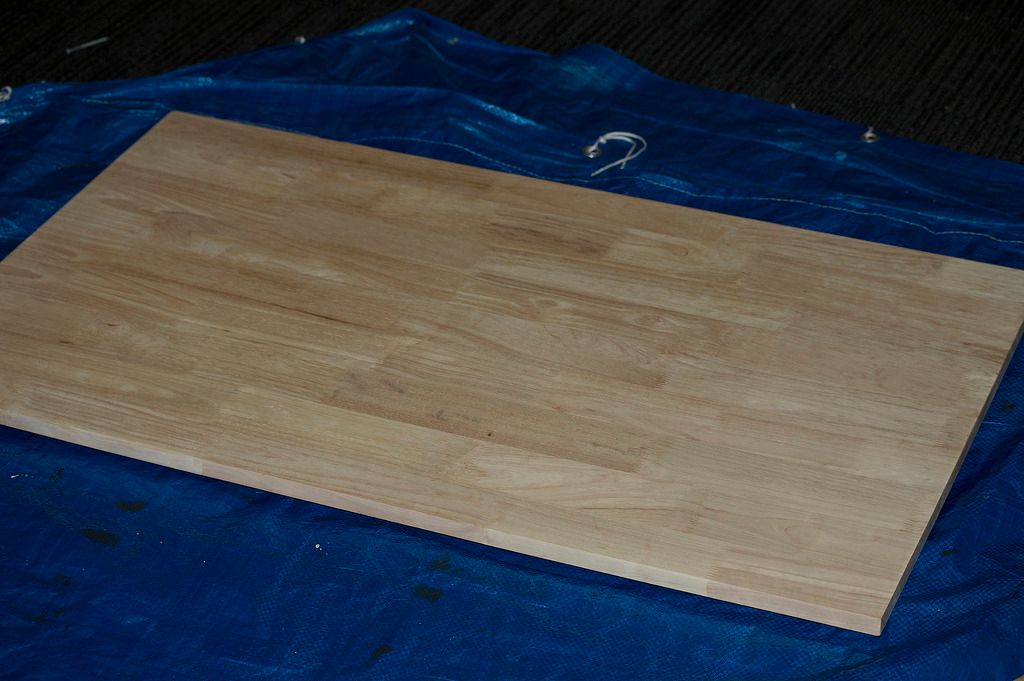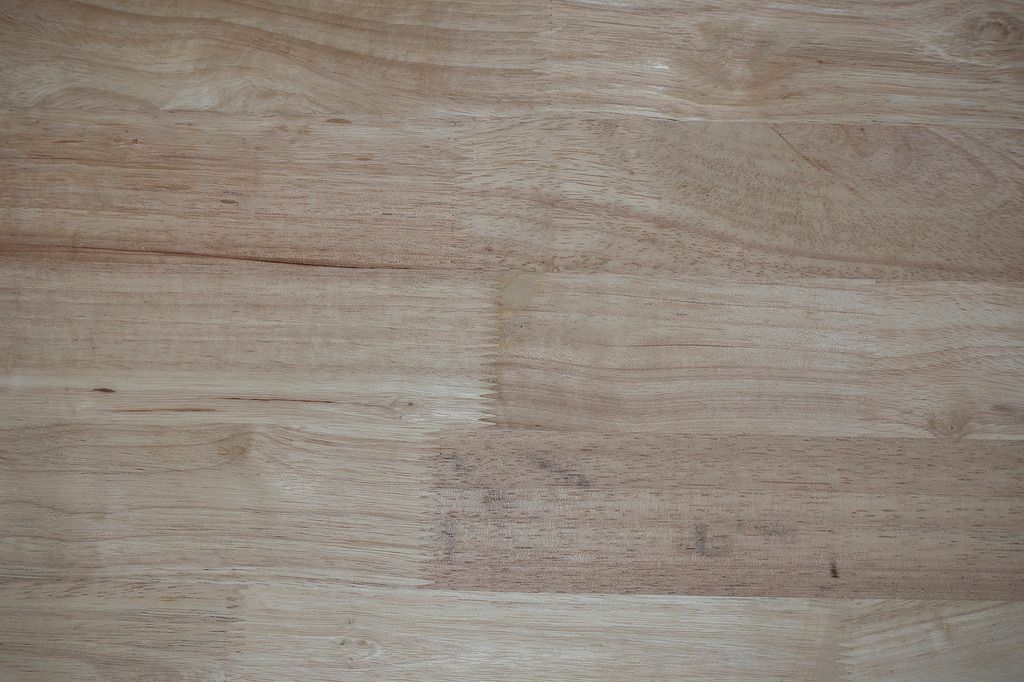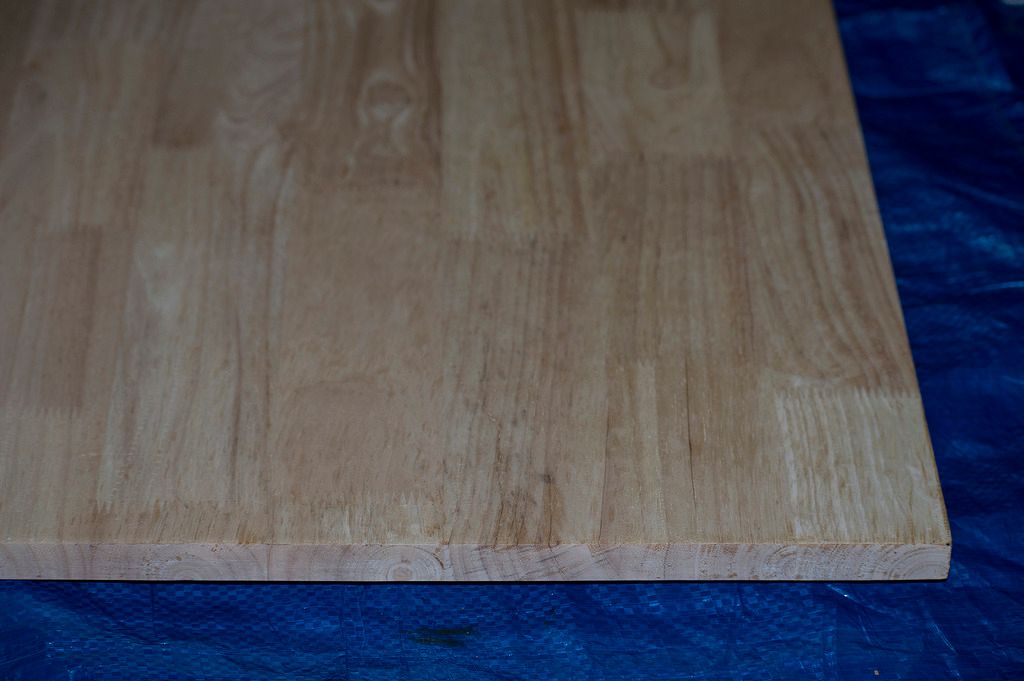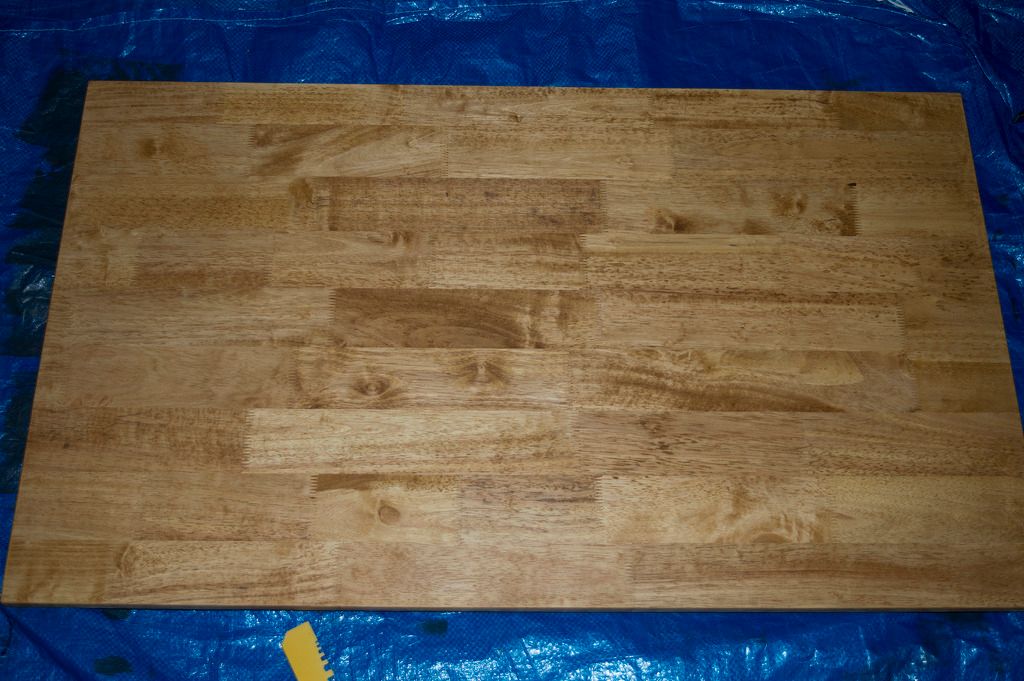 Needs Pictures: 0
Needs Pictures: 0
Results 1 to 15 of 29
-
14th May 2017, 01:46 PM #1
 Unknown Wooden Top Needs Finishing
Unknown Wooden Top Needs Finishing
G'day,
My wife bought an old kitchen trolly from savers the other day so I can use it as a taboret for my art studio. I took the top off and sanded the top back to 180grit. I'm not sure what wood it is (looks like pine?), however all I want to do is give it a nice beech colour and satin finish. Unfortunately I'm not that experienced with finishing so I'd really appreciate everyones expert advice on what to get from bunnings.
Things that I have on hand are Feast&Watson Sanding Sealer, Feast&Watson Wipe On Poly, MinWax Wood Finish - golden Oak (About 150mL's left), tub of Feast&Watson Cabnaura Wax.
Here art some photo's of the



Here is a photo of the colour I want:

-
14th May 2017 01:46 PM # ADSGoogle Adsense Advertisement
- Join Date
- Always
- Location
- Advertising world
- Age
- 2010
- Posts
- Many
-
14th May 2017, 06:29 PM #2

Hi and welcome.
Firstly, whatever you decide to use as the finish, 180 grit is too harsh, in my opinion. I would look to start at 100 or probably 150g then go to something like 180g, 240g and ending up at 400g. So its 100g for a start, then 150, next 180, 240 and 400g Each time you finish using a grit be certain that the result you have achieved, is smoother than the one before. The item should be wiped down by rubbing Methanol (Metho) soaked rags and then soft cotton rags to remove oil and other things that might alter the effect of the finish. What you have just done is produce a robust finish with very little colour. If you find that you do want to have a different finish (Gold Oak oil) then add it now following the Manufacturer's instructions. Then add a sealing layer using the material (Your Wattyl Golden Oak) used to wipe down the wood after final sanding (see above).
So in your case, sand to 100 grit, then use the next few grits (150,180,240,400 grit)to reach a smooth clean finish. Then add Golden Oak oil to the wood and rub it in with a cotton cloth. Once dry, use something like oil of one type of another or wipe On Poly, or use something else.
If you want to talk about it, you can contact me via email or PM (here)
Hope that's clear and helps.
Regards,
RobLast edited by LGS; 14th May 2017 at 06:32 PM. Reason: errors
-
14th May 2017, 08:15 PM #3
-
14th May 2017, 11:44 PM #4

You can use a sanding sealer to seal the wood before applying a stain. There are a number of products on the market and some have particles that will seal the pores. I have never used them myself and can not advise you on what to expect. I had a friend that would use one on his wood turnings and the results were very smooth.
For me I have used the sanding sealer(Shellac based) from Ubeaut or I have used shellac that I mixed myself. If I make up a Shellac as a sanding sealer it would be normally be very thinned out.
You also mention that you think that this top is made from pine and if is it I would suggest that you use Shellac as that would stop blotching. Personally after looking at the photos I don't think this is pine.
-
15th May 2017, 02:01 AM #5

The top is definitely finger jointed and the wood almost certainly plantation grown.
My guess is a northern hemisphere species that is not radiata. It might be birch.
But agree with sealing before applying a stain. Because you already have some, I suggest the feast watson sanding sealer.regards from Alberta, Canada
ian
-
15th May 2017, 03:24 AM #6

Hi Sheeny,
I haven't needed to use a sanding sealer, except once about 12 years ago. Most of my stuff is done using new, solid hardwoods. Christos and Ian seem to have it right. I would use the Feast Watson as well. In the package insert (online) they say to sand up to the next from last grit, which means that, according to my system, adding the sanding sealer and use the 240 pad, then when you've done that, add the colour and sand when dry, with the 400 grit.
Probably the easiest thing to do from there would be use shellac as the top coat and rub it back, or to add something like pure Tung Oil over the top. Tung Oil is my choice for finishing. I buy it as Hard burnishing Oil. But that is not available in the Northern Hemisphere, I believe. Shellac is probably the go, though, in this situation.
Regards,
Rob
-
15th May 2017, 08:40 AM #7

Hi Guys, Thanks for all your replies. Whats the difference between the Feast Watson Sanding Sealer and the Timber Primer, and which one would be better for me to apply so as to get an even stain?.
-
15th May 2017, 08:44 AM #8
 Member
Member











- Join Date
- Feb 2017
- Location
- Victoria
- Age
- 47
- Posts
- 52

I think its ya standard imported south east Asian specialty. Rubberwood as is generally known in the deep south of Vic. Para wood. 90% of imported furniture is made from it It seems. Nearly always stained due to its light colour.
-
15th May 2017, 07:20 PM #9
 GOLD MEMBER
GOLD MEMBER











- Join Date
- Nov 2012
- Location
- Brisbane
- Posts
- 1,809

Yes, ozka is on the money. It looks very much like rubberwood - which is really the trees that rubber comes from. Once they stop producing a good flow of latex the trees are cut down and used as timber - hence the small section sizes and the finger jointing. Pines (conifer bearing species) do not have pores (botanically known as vessels) they only have the much finer textured fibres botanically known as tracheids. Yes, yes, I know, too much information but you just can't keep a botanist down/quiet, as they say (or should). What this 'waffle' means for you is significant however, conifers are usually resinous and do not take stains well. Flowering plants (e.g. rubberwood) should take stain well - though I have never tried. BTW, most poly stains are pigments rather than true 'stains' and will work just fine.
I bought a number of rubberwood topped benches from Aldi for my wife, who is an artist (they were very good value). They are all finished in some kind of poly and all are serving very well. They are not stained, AFAIK, but do look pretty good as the finish deepens the colour. many (OK most) clear oil-based polyurethanes will do that.
I know that you have the golden oak finish but I suggest you test on the underside first to check if it is the colour that you want. One alternative is Baltic Pine - that is what your example looks like to me.
Good luck. i do not think you will need it as whatever hard-wearing finish that you apply will be fit for purpose and, with time, you will most likely be happy with.
David
-
15th May 2017, 08:20 PM #10

Hi David, Thanks for your expert advice and information. In regard to the Baltic Pine, the only Baltic Pine at Bunnings I can see are the Bondall Monocel Stain & Varnish. I only really want the stain so do you or anyone else have a suggestion for a close-ish match for the colour I'm after?.
Thanks,
Sam
-
16th May 2017, 11:32 PM #11
 PLEASE NOTE:
PLEASE NOTE: Originally Posted by LGS
Originally Posted by LGS
Metho is the shortened or slang version of Methylated Spirits (denatured alcohol, ETHANOL) NOT Methanol.
Methanol (aka wood alcohol) is highly toxic, unlike ETHANOL (Methylated Spirits, aka denatured alcohol).
5% - 10% of Methanol used to be used to be added to Ethanol to denature it making it undrinkable hence the name Methylated Spirits (Metho). Other denaturants are more often used today, like: isopropyl alcohol, acetone, methyl ethyl ketone, methyl isobutyl ketone and denatonium.
Please..... DO NOT USE METHANOL.
Cheers - Neil
KEEP A LID ON THE GARBAGE... Report spam, scams, and inappropriate posts, PMs and Blogs.
Report spam, scams, and inappropriate posts, PMs and Blogs.
Use the Report icon at the bottom of all Posts, PM's and Blog entries.
icon at the bottom of all Posts, PM's and Blog entries.


-
17th May 2017, 03:50 AM #12

My apologies, Neil. I am aware of the toxicity of Methanol CH3OH and would not have recommended it for anyone to use. But in a senior moment, I recommended it on the basis that I have always referred to Methylated Spirits as 95% ethanol. The use of "Metho" as a descriptor was wrong.
Metho | Define Metho at Dictionary.com
My apologies, once again.
Regards,
Rob
-
17th May 2017, 11:37 AM #13
 GOLD MEMBER
GOLD MEMBER











- Join Date
- Nov 2012
- Location
- Brisbane
- Posts
- 1,809

Hi Sam,
I use mostly Wattyl Craftsman interior spirit stains and have an old can of one labelled as 'Baltic Pine" which I have used to stain pine and other timbers to that kind of colour. Being a spirit based stain it is only suitable for interior use (i.e. would fade in sunlight/outdoors use). It is strange stuff as when you pour it it looks almost purple - but on the wood it is golden brown. If you use it you should, like all new stains and finishes, try it on the underside or on a scrap of the same timber beforehand to gain confidence it is what you want. The last time that I used it was in restoring/repairing an Art Deco/Art Moderne Queensland Maple coffee table, which I posted a thread on in the restorations forum.
Qld Maple coffee table CE waxed and finished .jpg The area that I repaired and stained - lower right hand edge of the column - is very small in this photo (i.e. most of the photo shows the original colour) but matches the column colour in particular (column is darker than the top, which has faded). The repair was stained with Craftsman Baltic Pine mixed with shellac.
-
17th May 2017, 10:40 PM #14

Well I went ahead and applied some F&W Timber Primer, waited arround 30minutes and applied the stain. Heres the results:

I'm not that familiar with what a normal stain should look like but I was expecting it to be more uniform all one colour. Have I done something wrong?. If so what can I do to rectify it?
Thanks for any help, Sam
-
18th May 2017, 12:57 AM #15

Hi Sam
from the Feast Watson instructions for Timber Primer -- Allow surface to dry for 12 hours before over-coating with desired finish
That omission will be one of your problems. But the result you now have might be as good as you can expect. From here it looks as though each piece of wood is relatively consistent in colour. Just that with the finger jointing there are a great number of small pieces all a slightly different colour.
"polishing the dull side" as Fletty would advise, once it's in place and covered with artist's paper, perhaps it won't be very noticeable.regards from Alberta, Canada
ian
Similar Threads
-
Finishing wooden kitchen bench top
By dgc56 in forum FINISHINGReplies: 2Last Post: 3rd March 2014, 10:07 AM -
Sanding & finishing wooden jewelry
By PaulWG in forum FINISHINGReplies: 12Last Post: 21st November 2013, 05:05 PM -
Wooden woodwind instrument finishing
By Vardges in forum WOODWINDReplies: 8Last Post: 12th February 2012, 02:09 PM -
Unknown tree with an unknown growth.
By Durdge39 in forum TIMBERReplies: 9Last Post: 17th January 2011, 11:38 PM



 Thanks:
Thanks:  Likes:
Likes:  Picture(s) thanks:
Picture(s) thanks: 
 Reply With Quote
Reply With Quote
